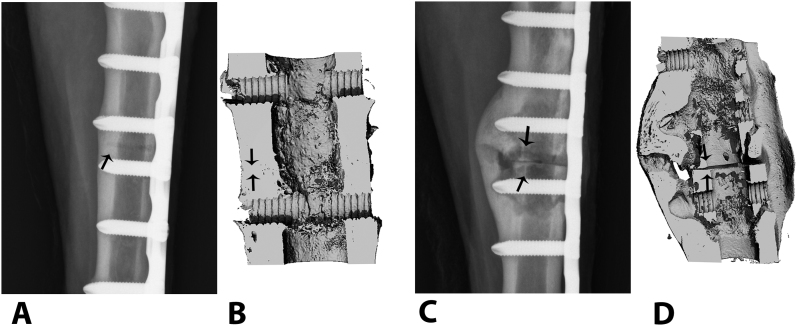Fig. 3.
Osteotomies repaired with vancomycin-treated (Figs. 3-A and 3-B) and untreated, control plates (Figs. 3-C and 3-D). The representative craniocaudal digital radiograph of the vancomycin-treated animal made ninety days after osteotomy (Fig. 3-A) is consistent with normal bone-healing and callus formation at the osteotomy site (arrow), but the control (Fig. 3-C) shows progressive signs of cortical thinning, periosteal disruption, and osteolysis consistent with septic osteomyelitis at the osteotomy site (arrows). Three-dimensional reconstructed microcomputed tomography views of the same osteotomy sites in the vancomycin-treated (Fig. 3-B) and control animals (Fig. 3-D) show persistence of the osteotomy gap (arrows) in the control, with a poorly organized lytic callus, enlarged medullary canal, and cortical thinning.

